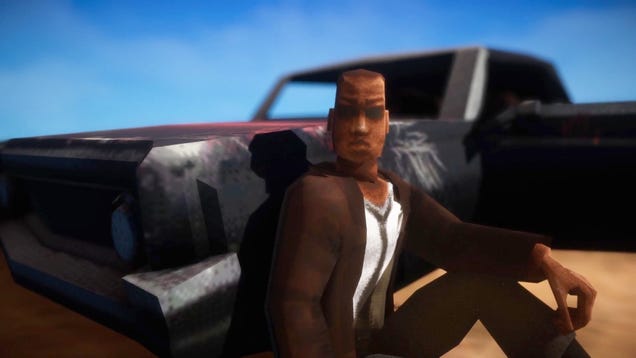Then, as we began to the see the new screens around the office, we were shocked. We knew we’d spec’d bright, OLED screens, but these things were EXCEPTIONALLY BRIGHT. Startlingly bright. So bright, in fact, we wondered if we could use actual Steam Deck OLEDs as the only light sources to light our launch trailer. That seemed fun enough—and dumb enough—to try, so we got to work.
Stanley Kubrick lit Barry Lyndon with nothing but candles. Could we light the Steam Deck OLED launch trailer with nothing but Steam Deck OLEDs? And if not, could we get a deal on a LOT of candles?
We figured we would need about 100 Steam Decks to pull this off. And as luck would have it, we had that many old OLED prototypes laying around the office. As for how our bounty of OLEDs should frame the central “hero” Steam Deck, we thought it made sense to fully surround it like the lighting in a product photography studio, or a dance club. You’re likely thinking exactly what we were: the only way to create this effect was to construct a large, metal orb.
At Valve, we will construct an orb at any opportunity.
We had the 100 Steam Decks. We knew they absolutely had to be suspended inside a giant orb. What else was required?
- A combination custom-milled and prefabricated aluminum frame, designed and built by folks in the Valve hardware prototyping lab.
- Two bonded network switches, long-ago retired from Steam. (That’s right! There is a chance that the brain of our orb was once the very same server on which you no-scoped a fool or downloaded Doki Doki Literature Club.)
- A mobile networking rack left over from an old The International we found in the corner.
- Every spare network cable we could grab in the IT offices.
- Dozens of Deckmate Steam Deck mounts (an off-the-shelf Deck peripheral made and sold by a member of the Steam Deck community)
- Hundreds of tiny 3D printed clips, mounts, and brackets to hold it all together.
Once we had all that, it was time… to build the orb:
The Orb itself was designed and built by a handful of people responsible for the actual Steam Deck hardware: some who work on the device itself and some who work primarily in the prototyping/fabrication workshop. The networking was a collaboration between people in the IT group and help from Steam networking (including those retired switches from Steam and the rolling rack mount from an old The International broadcast setup)

Software was maybe the most fun, because it wasn’t custom. Steam Deck is “just” a Linux PC in a tiny case, which meant we could use a bunch of existing solutions. We wanted to iterate quickly, so ideally any video displaying on the orb would work in real time (as opposed to rendering out individual videos per-screen and playing them in sync). So we ended up using OBS for the whole setup, both from the transmitting computer and running on each receiving Deck in the orb, with the NDI plugin for low latency sync.
 Our first test of streaming video to all the Steam Decks at once.
Our first test of streaming video to all the Steam Decks at once.
NDI is a standard developed by NewTek (for all you old-school video production- slash Amiga-heads, they’re the creators of the Video Toaster!) for sending streaming video around a LAN with low latency and good sync. In addition to being used by live broadcasters who prefer networking over dedicated video cable pulls, it’s commonly used by modern planetariums and megachurches. It was perfect for our needs.
We wanted video that played in the orb to look correct, not stretched out or distorted, so we needed to build a video template that took the spherical shape into account. We took the original CAD file for the aluminum frame and did a quick spherical unwrap in a 3D modeling program to know the approximate screen positions in a flat space. We took that and dropped it into a very wide and high res After Effects project to animate in, and then sent it back out to the orb as a single, tightly packed 4K video.
Animating an iris open effect on our motion graphics canvas, and looking at it in the packed video grid that will be streamed to the orb.
The result was that we could watch motion graphics on the Orb—playing from an OBS scene, or through After Effects—and then tweak them and try again very quickly. It let us get experimental right away, and start solving problems on the shoot using the orb itself. Not to get too deep into the weeds of video production (way, way too late), but for the final shot in the trailer, we wanted to add rim lights to the Steam Deck in the center of the orb. Because our graphics composition was playing back in real-time, it was as simple as drawing some bright white rectangles in OBS, and dragging them around the canvas until they were providing the lighting we wanted in-camera. Here’s a video of the packed 4K grid streaming over to the orb in OBS:
The video grid streaming out to the orb in OBS.
It meant we could capture some truly bananas footage, lit entirely in-camera, that both looked beautiful and showcased the power of the displays in the new Steam Deck at the same time. And if we did our jobs right, the results would look good to anyone, whether they noticed how we achieved the look or not. It also meant we got to build a huge video orb, which we know is a life goal shared by many.
So there you have it. After all that design, engineering and problem solving, we made an ad. It involved lots of cameras, a smoke machine, a big moveable arm, half a dozen last minute deck swaps, and many edits and gnashing of teeth. Here’s the final product:
After the ad we couldn’t bear to tear down the orb, so we put it in the lobby where we presume people from around the globe will make the pilgrimage to bask in its glow. Well, once we plug it back it in.





